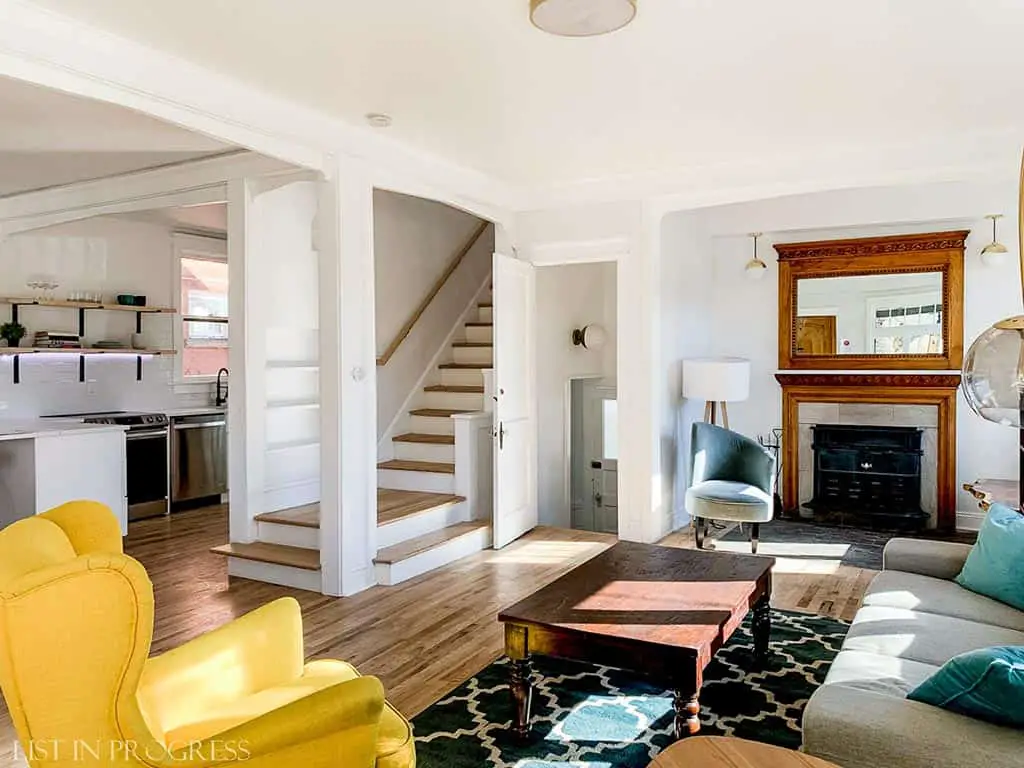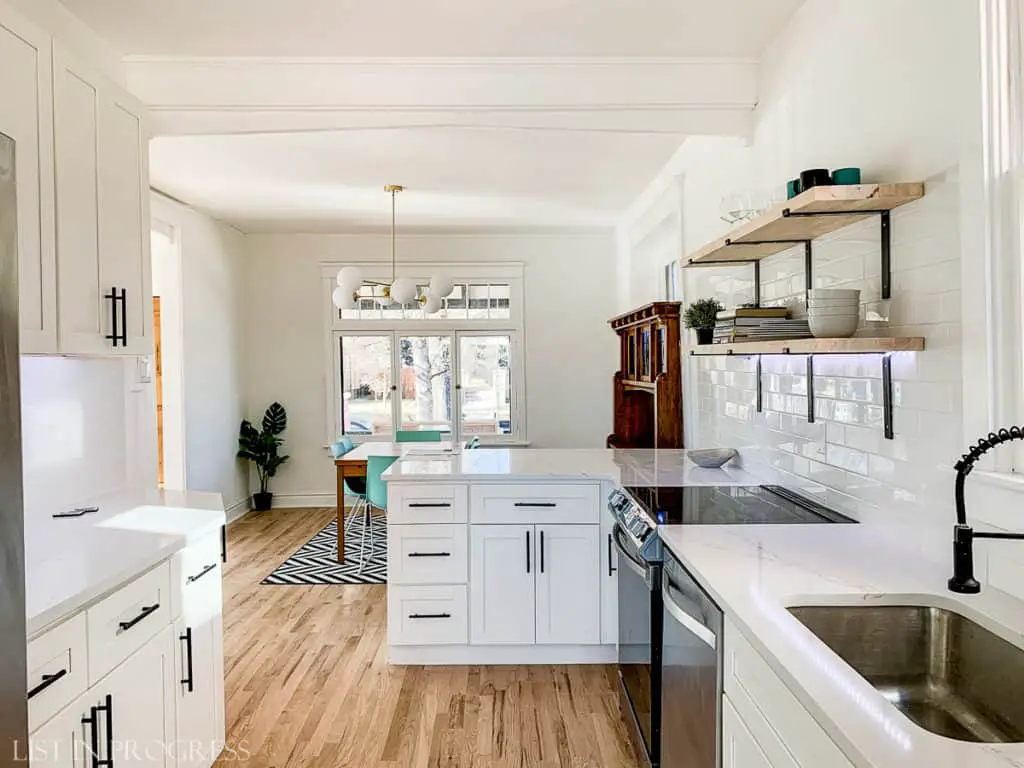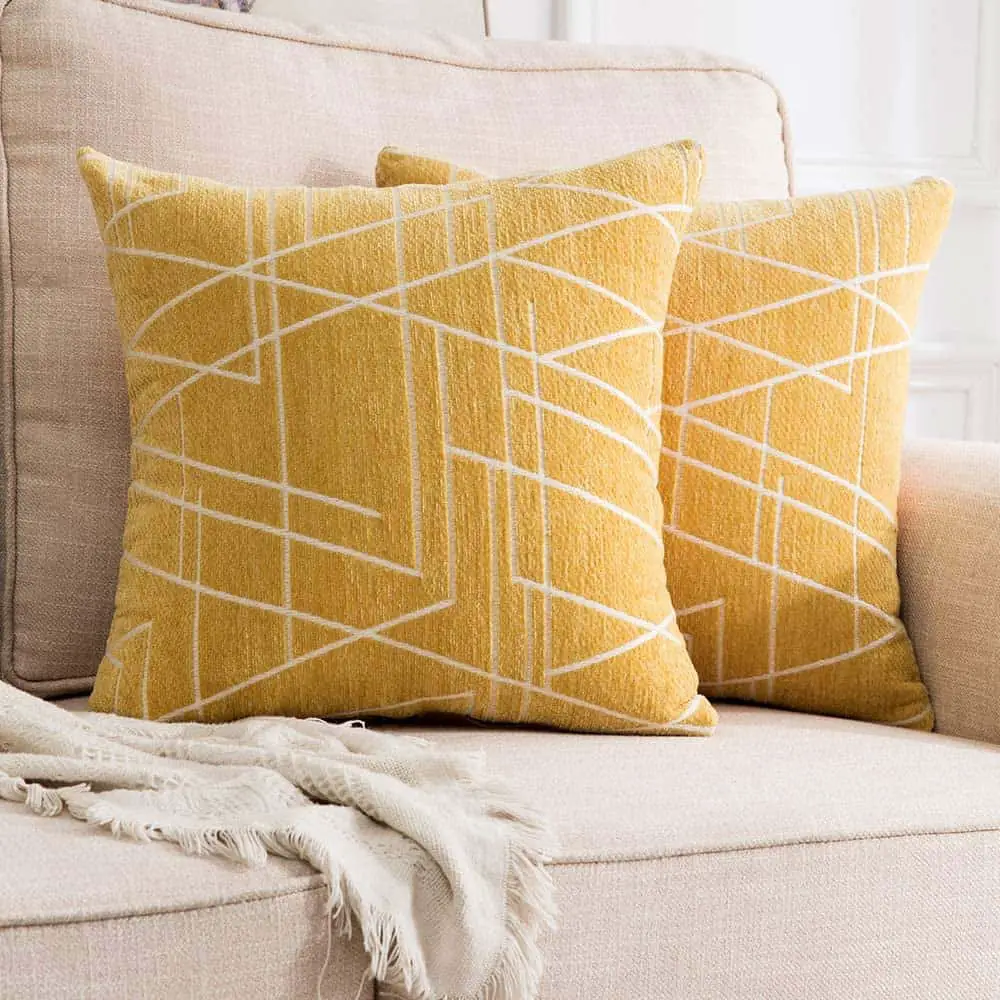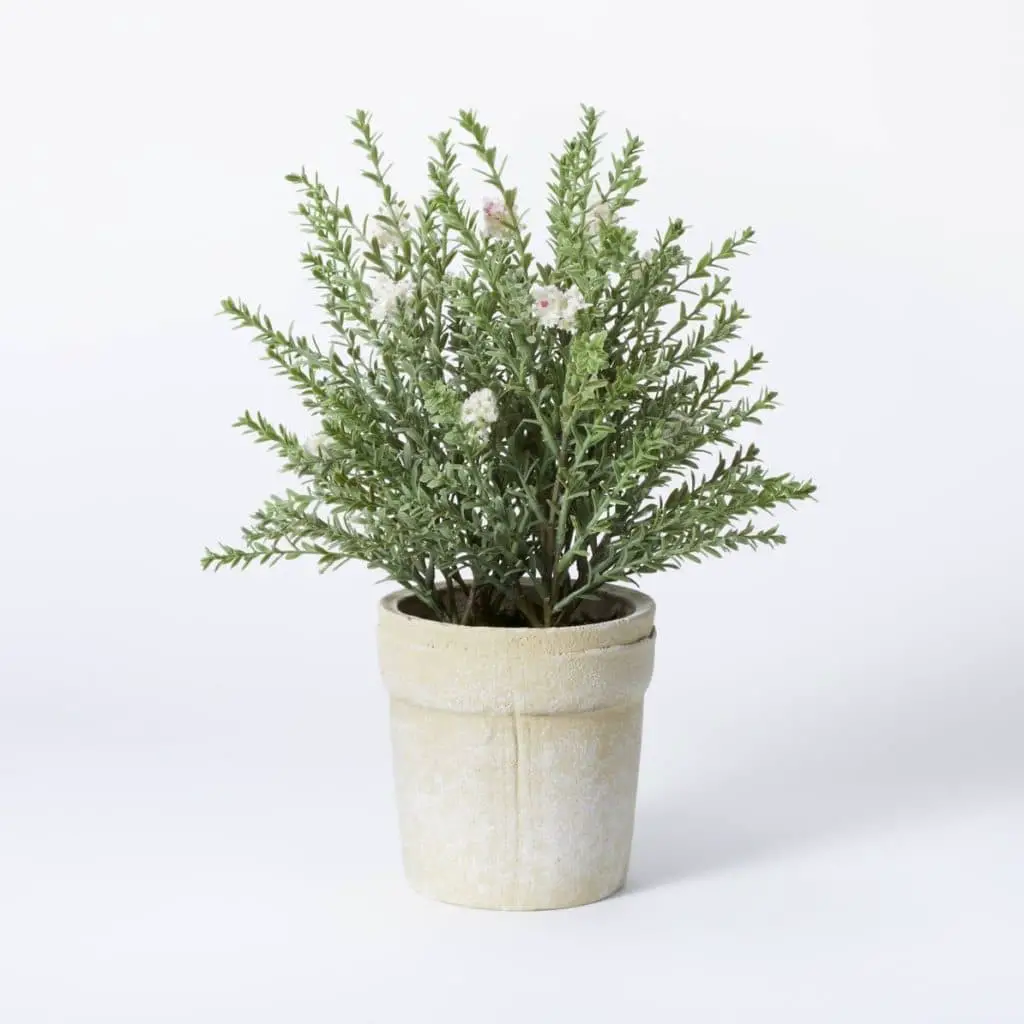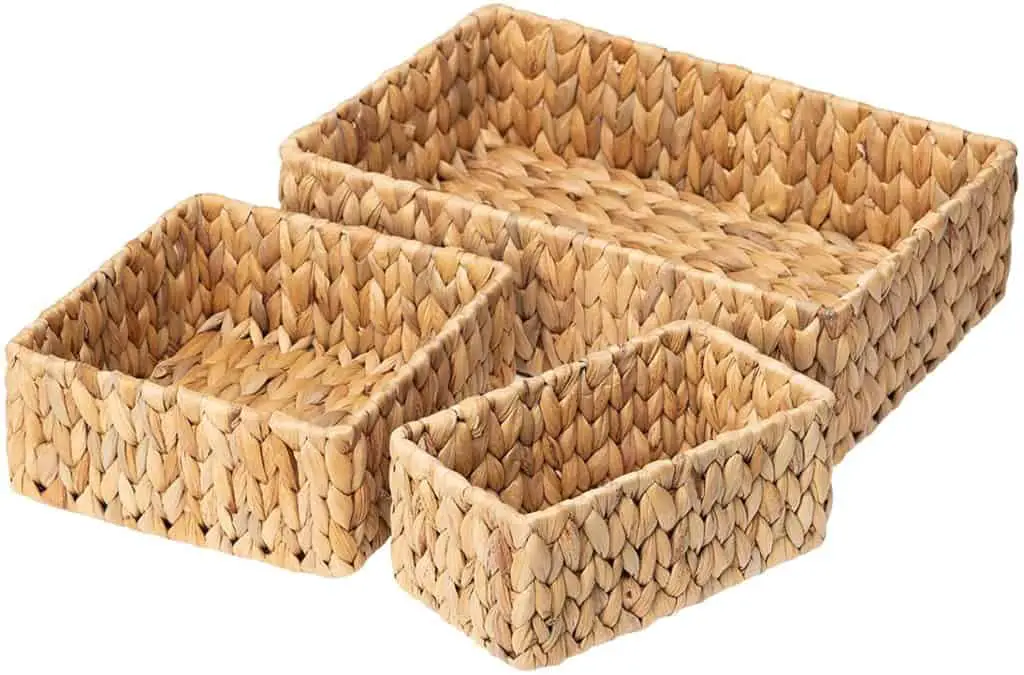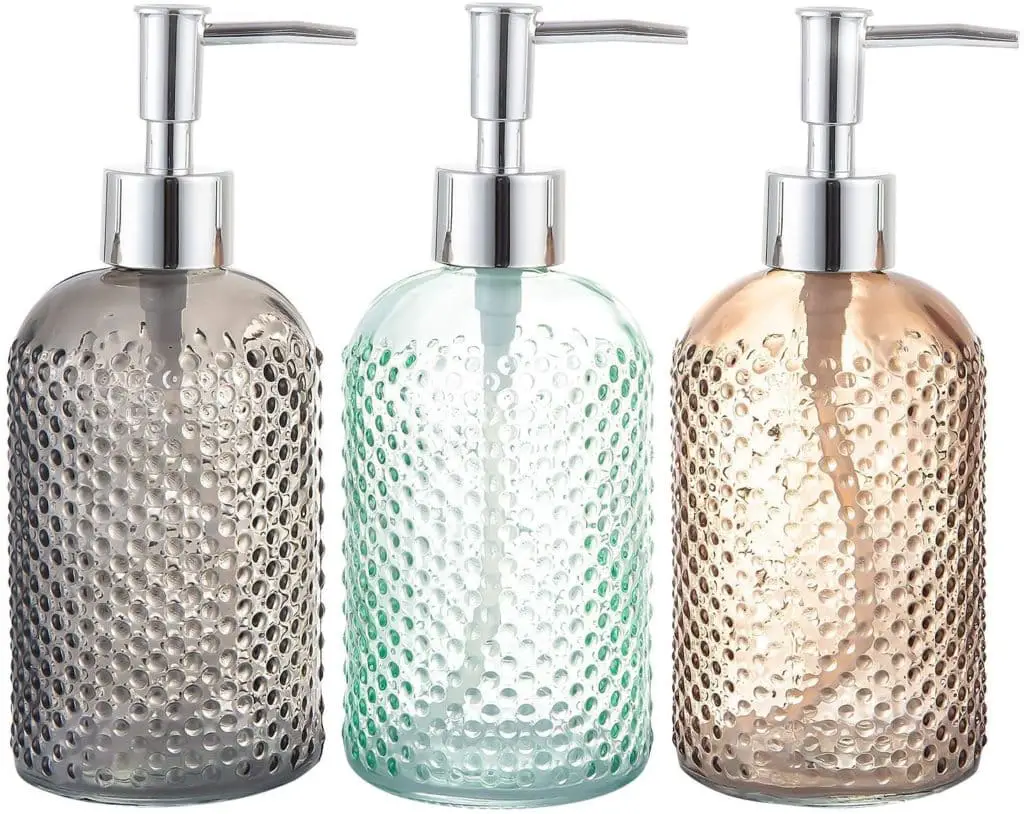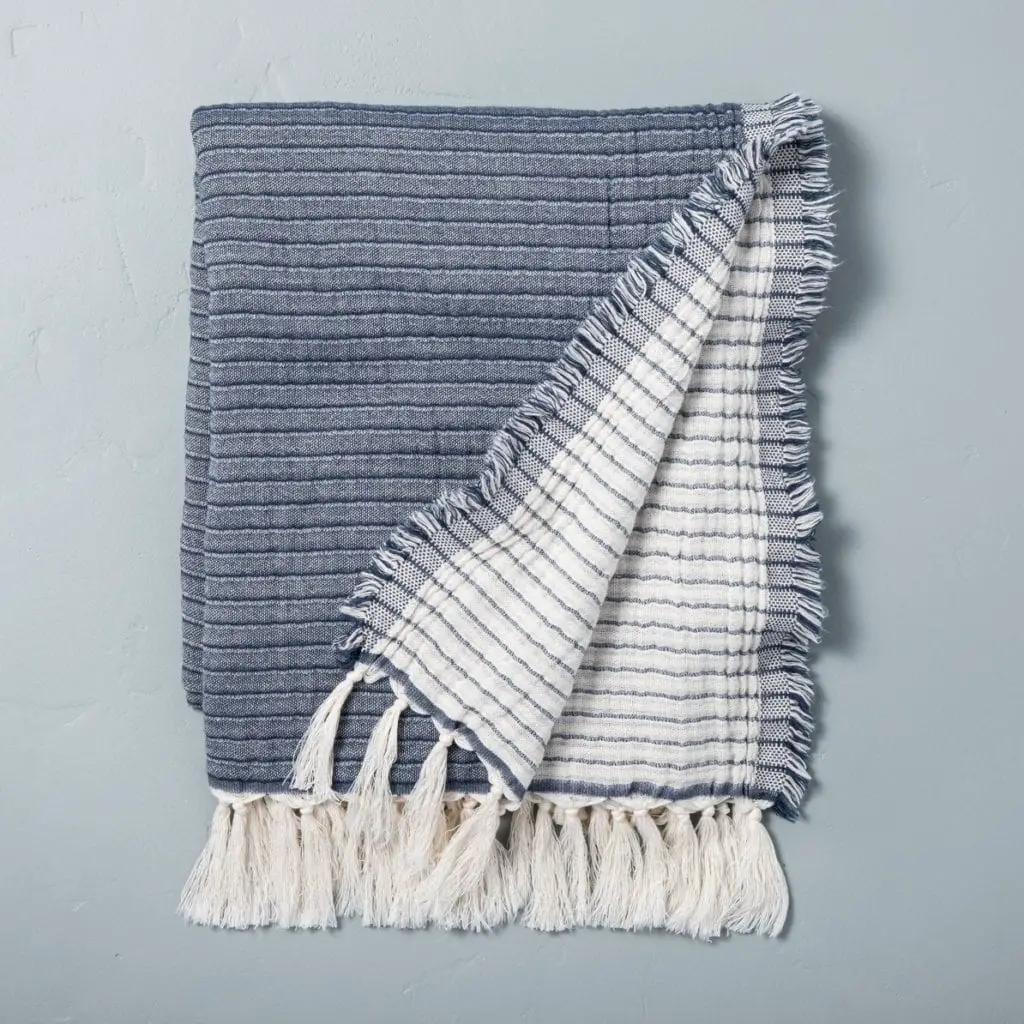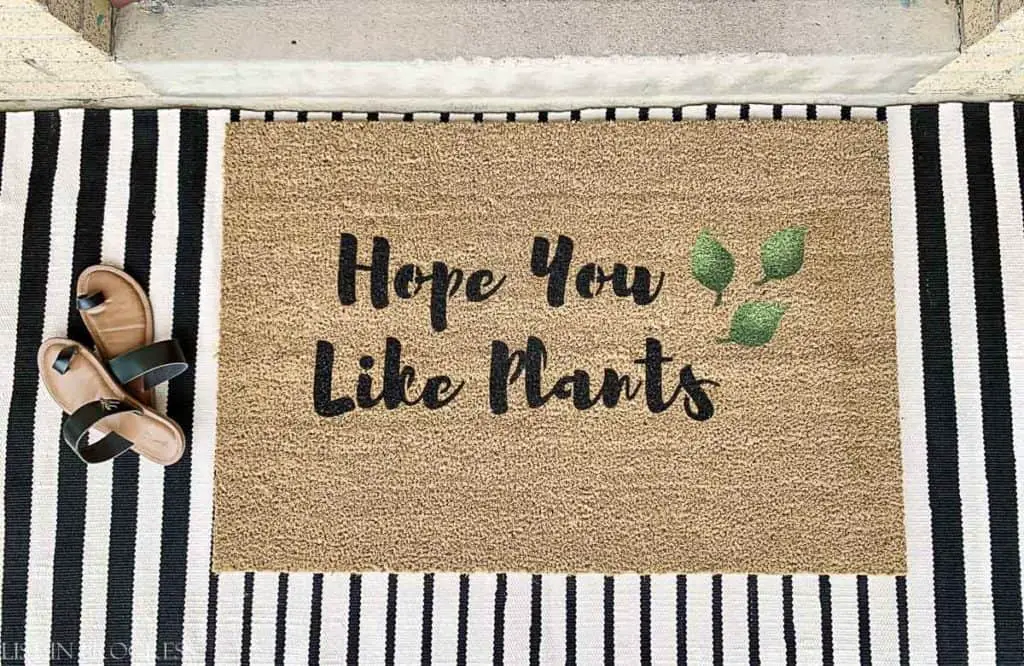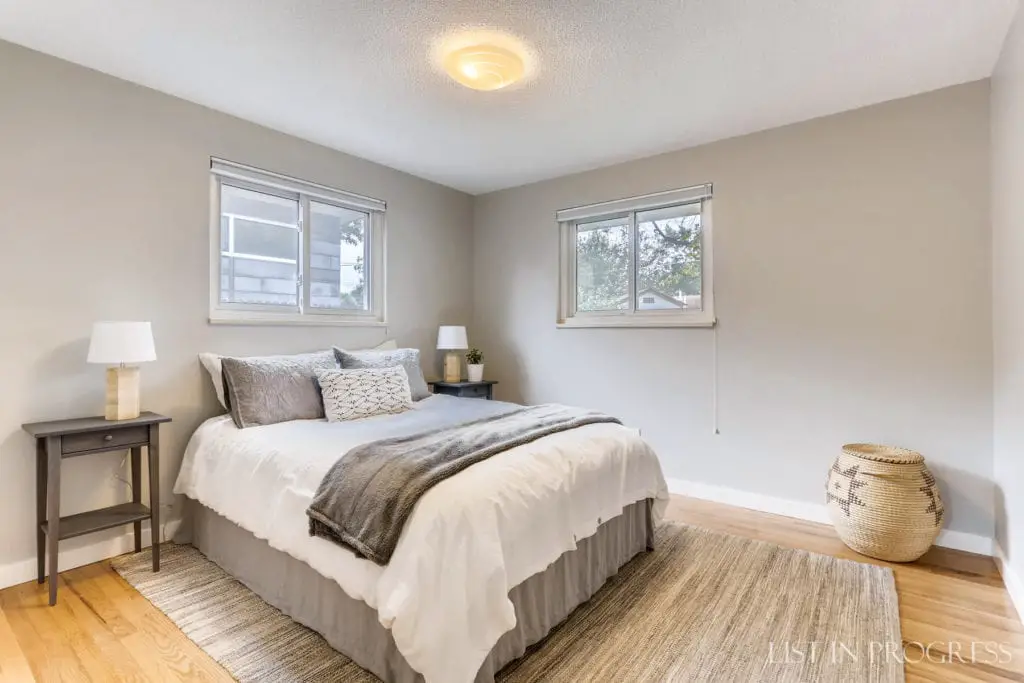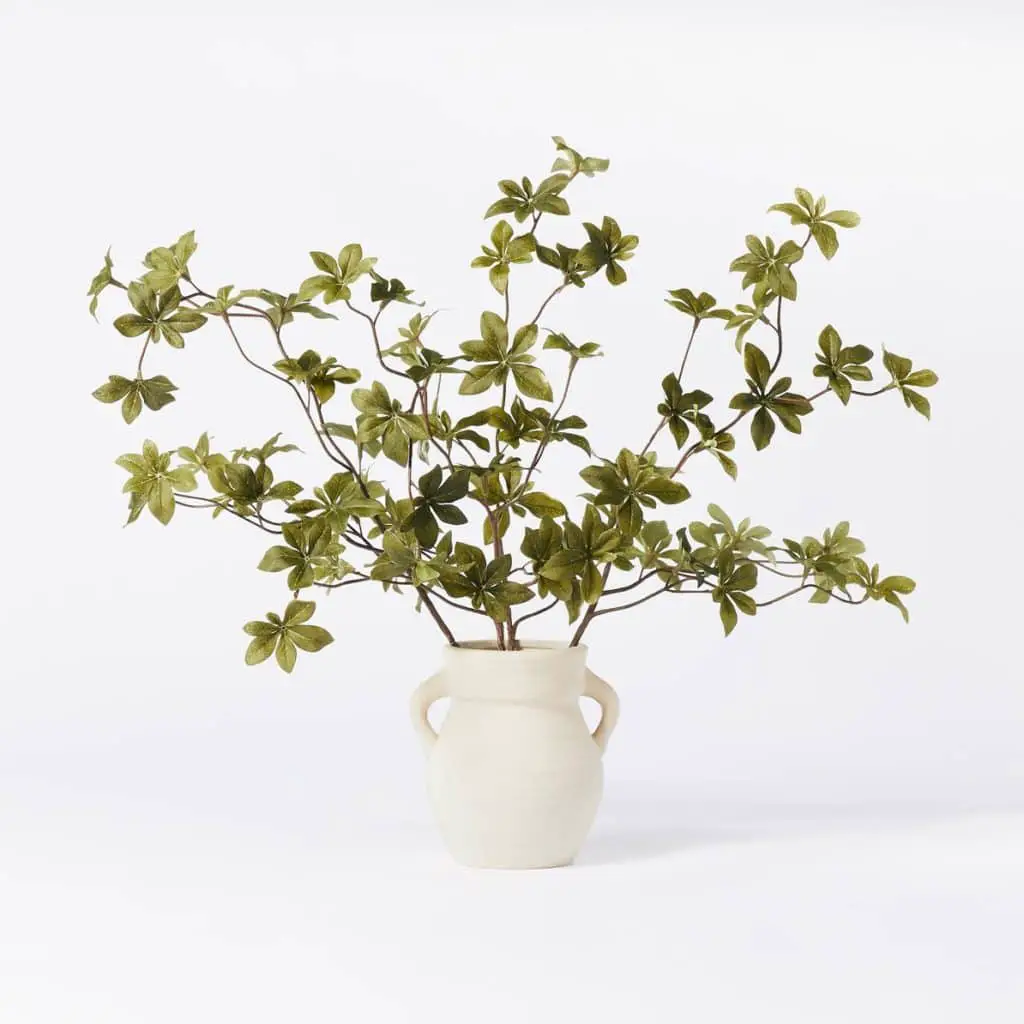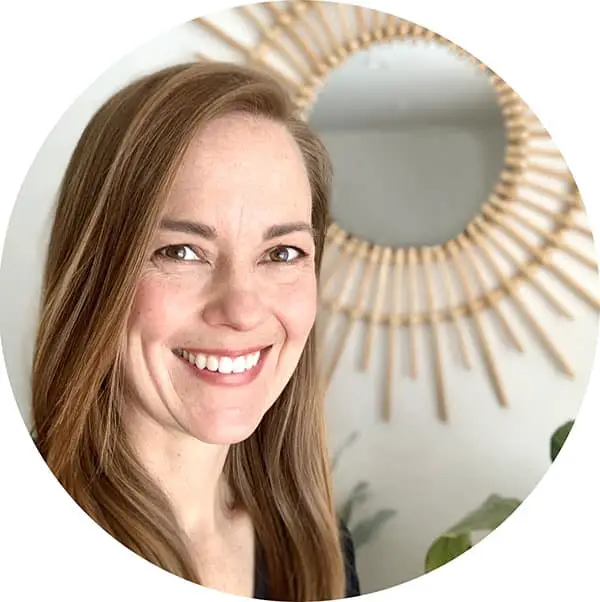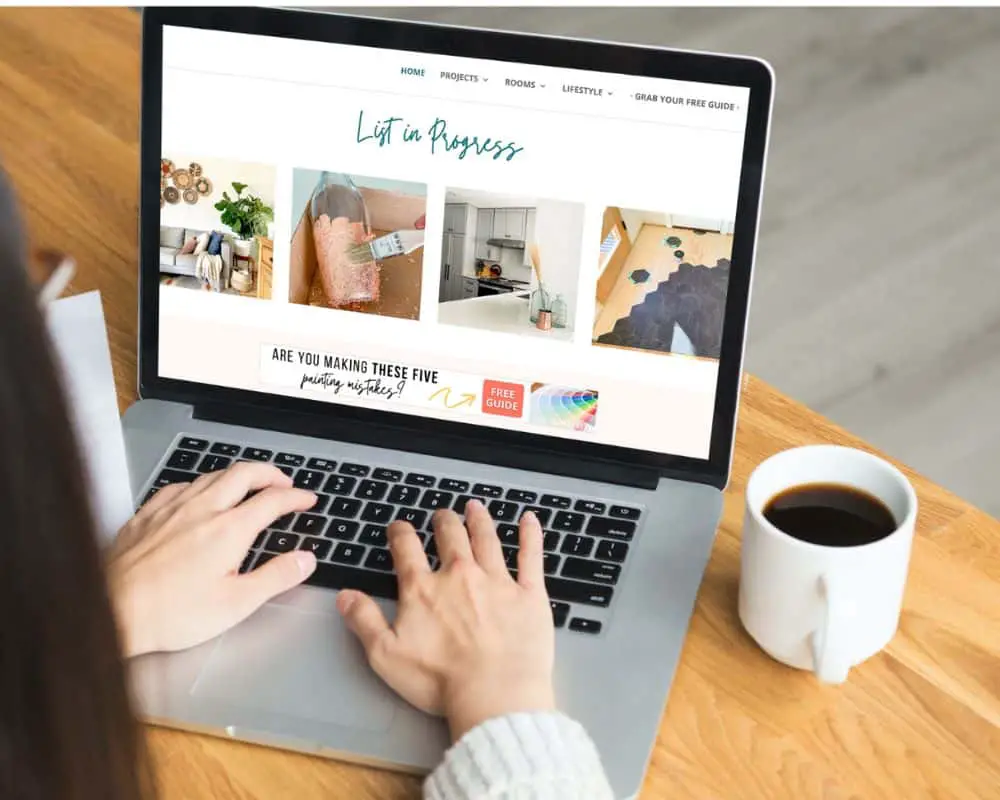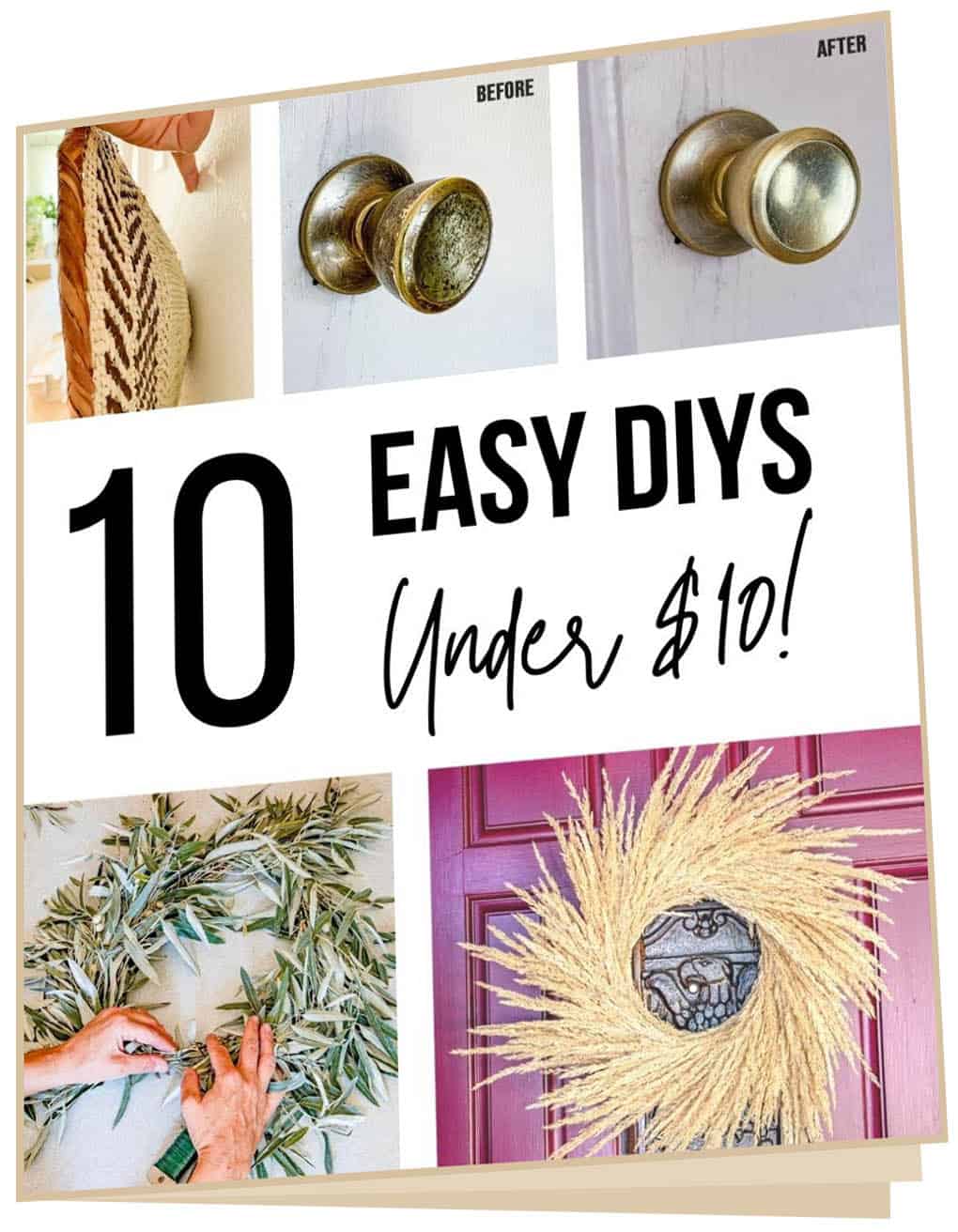If you’re researching how (and why) to stage a home for sale, you’re in the right place. This post is the last installment in my three-part series to help you buy or sell a home this spring, or to just update your home’s potential resale value. Read the first two posts here:
Other Posts in This Series:
4 Must-Do Projects Before You Sell Your House
8 Secrets to Getting the Best Home Inspection

Staging Topics in This Post
Does Staging Actually Work?
3 Tips Before You Start Staging
15 Tips to Stage an Occupied Home a Budget
5 Tricks to Stage an Empty Home on a Budget
7 Staging Secrets for Any Home
Professional Staging Resources
Why Stage a Home When You Sell?
Staging is billed as a way to help potential buyers envision themselves living in a home. I think the trick is to suggest how spaces can be used, without going overboard in decor or style. It’s like pointing someone to the ice cream aisle but not personally escorting them through the grocery store. (Because that would be weird.) Let buyers find their way with just a little guidance.
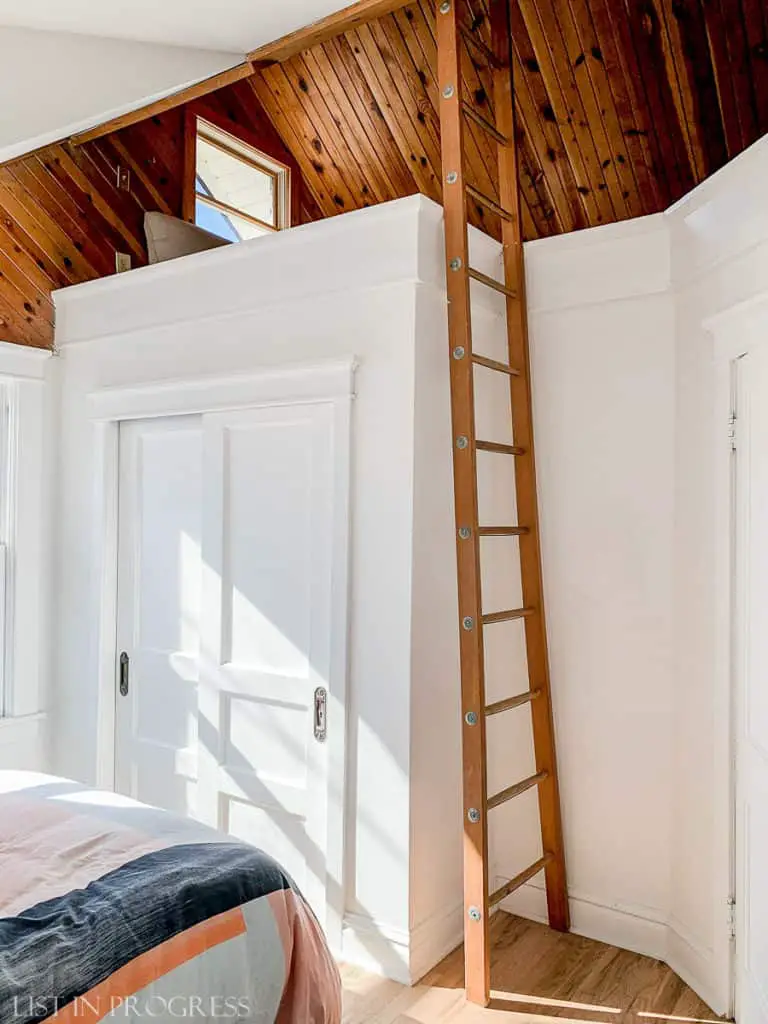
Yes – Staging Actually Works!
I’ll admit, I came up short when I researched statistics to convince you that staging is worth the expense. An internet search turns up plenty of sound bites claiming that staged houses sell for 10% more. The trouble is, it’s hard to actually measure. It’s not possible to run a comparison test where two identical houses are sold to two identical buyers and only one is staged. Instead, we rely on industry professionals’ opinions, so I turned to the National Association of REALTOR’s 2019 staging report. These stats are based on survey responses from 2,076 real estate agents.
Compared to similar, un-staged homes, staged homes in this report sold for these increased amounts:
- 22% of sellers’ agents reported an increase of 1% to 5% of the dollar value offered by buyers
- 17% of sellers’ agents reported an increase of 6% to 10% of the dollar value offered by buyers
- 7% of sellers’ agents reported an increase of 11% to 20% of the dollar value offered by buyers
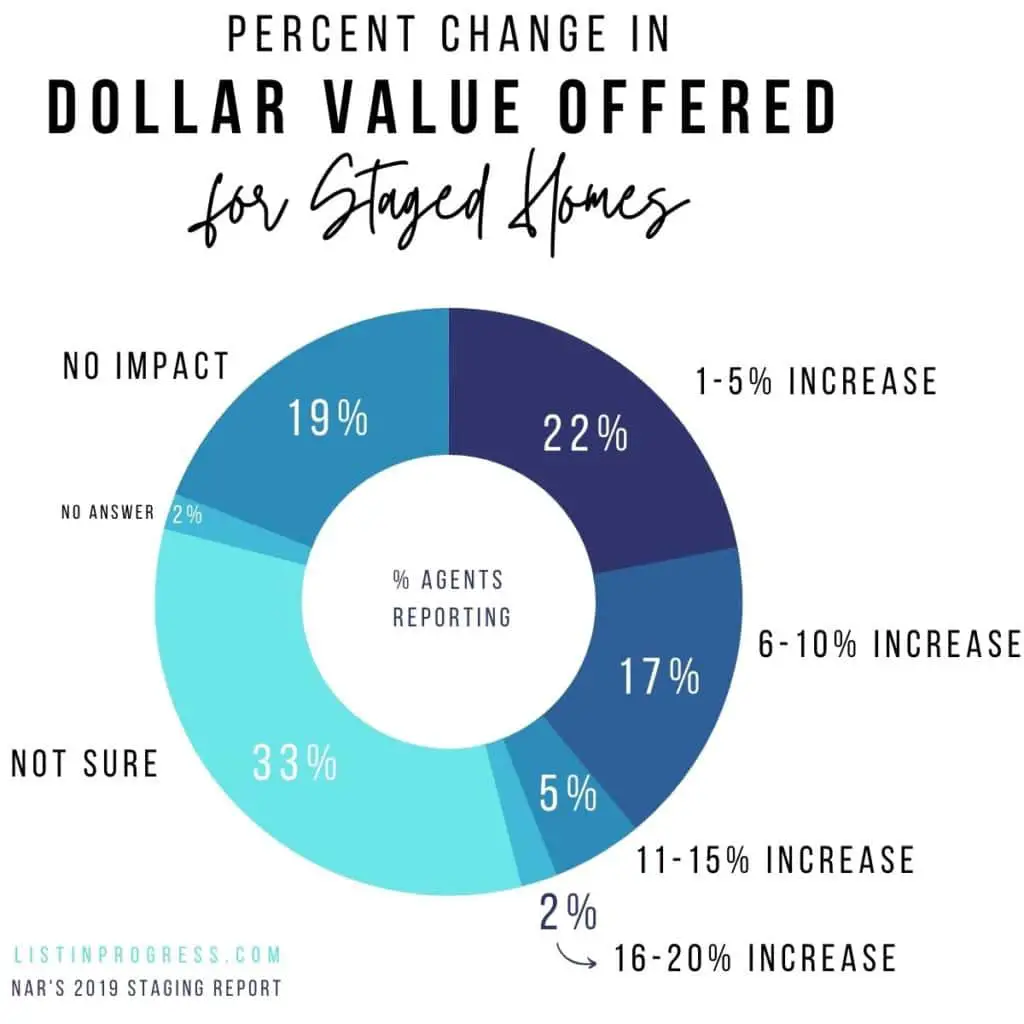
Also according to the report, the median amount spent on staging is $400. Plus, it’s possible that a staged home spends less time on the market, as stated in the NAR report, but this also seems like a subjective claim. Where I live, we’ve had a crazy seller’s market for years, so nothing worth buying stays on the market very long anyway!
Lesson learned: do the math! For example, if you hope to sell your home for around $250,000 and you spend $400-$1000 on staging, it’s possible that you’ll get an offer for at least 1% or $2500 more. (Potentially up to $25,000 more or higher…) As a baseline, I would ballpark a 1% increase over sale price to calculate whether staging would be worth your while.
Read More About Our DIY House Updates
Favorite Behr White Paint Colors
Closet Door Ideas to Update Any Room
How to Apply Gold Leaf to Glass Decor
Trends in Cabinet Hardware
3 Starter Tips Before You Stage a Home
Today I have a ton of ideas to pull off DIY staging on a budget. However, before you dive in, think about these three ways to focus your time, energy, and money:
1. First, read this post and start with cleaning and decluttering. Those two steps are more important than staging. Kitchens and bathrooms, especially, should be sparkling clean, even if there is not a single staged item on display.
DIY Cleaning Hacks for People Who Hate to Clean
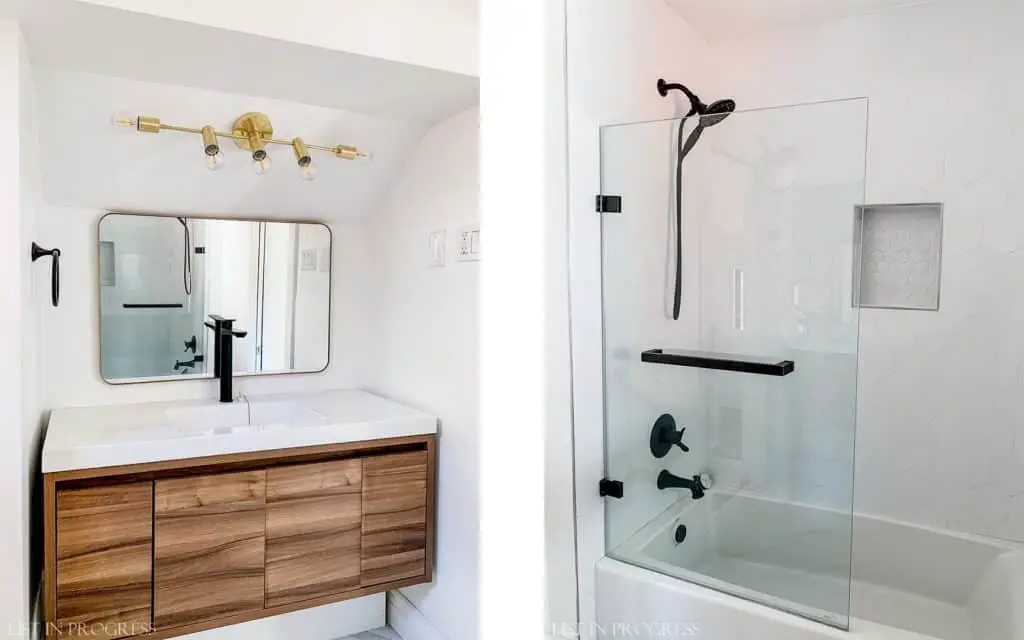
2. Picture your potential buyers. Who would love your home? You’ll want to stage the house for them, so try to imagine their “new home wishlist.” If you have a nice kitchen, you’ll want to highlight it for a future buyer who loves to cook. If you think young families will love your layout, stage one bedroom as a nursery. Basically, help your buyers picture themselves at home in your space.
3. Get ideas for home staging by browsing staging company portfolios. Whether you plan to DIY your staging or hire out, you’ll probably find inspiration by looking at professionally staged homes.
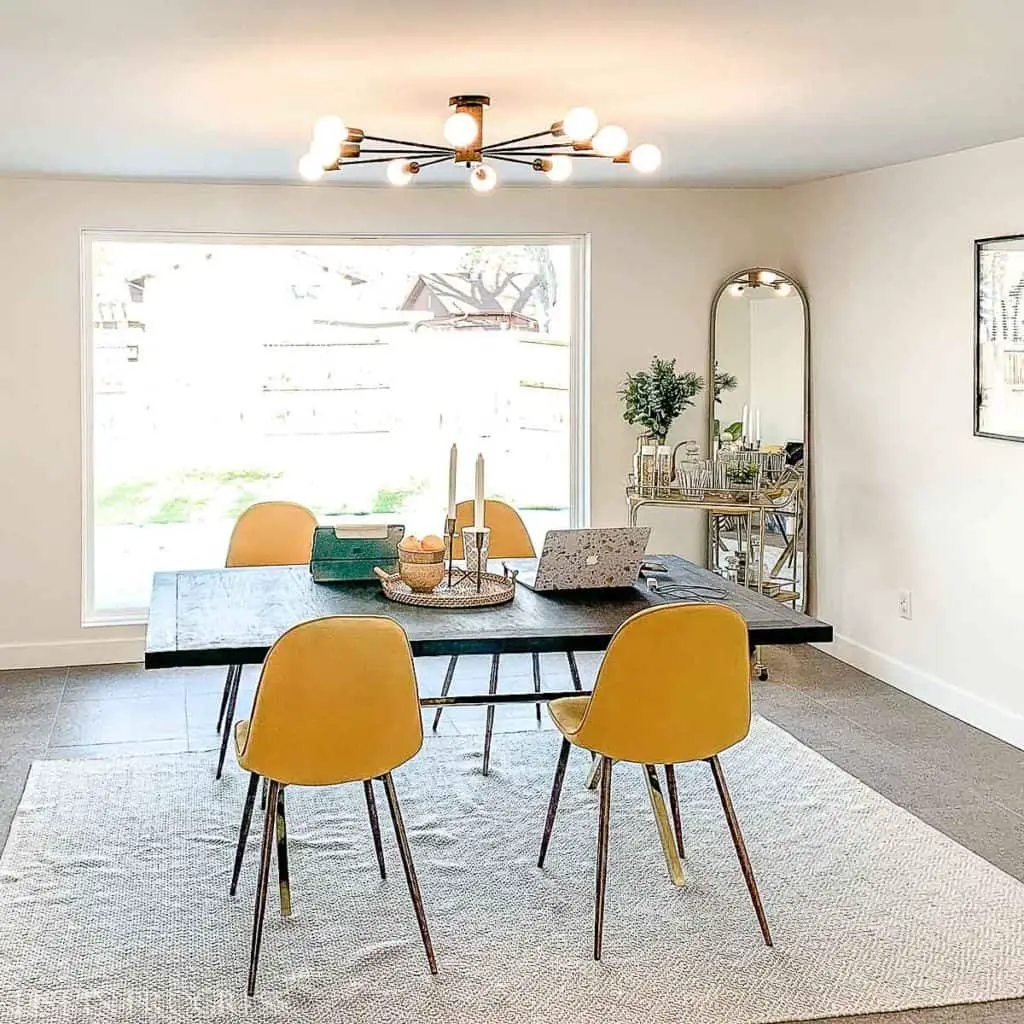
15 Tips to Stage an Occupied Home on a Budget
Let’s say you’re planning to sell your home before you move out. Here’s my best advice on what to hide, display, and replace:
PACK UP OR HIDE:
1. Standard advice: depersonalize your space by packing up family photos, political signage, sports memorabilia, doll collections, etc.
2. Play it safe and remove any valuable items, including art.
3. Erase any trace of pets – beds, food bowls, litter boxes, toys…
4. Empty or pack away at least half of the clothes in your closets so they appear more spacious.
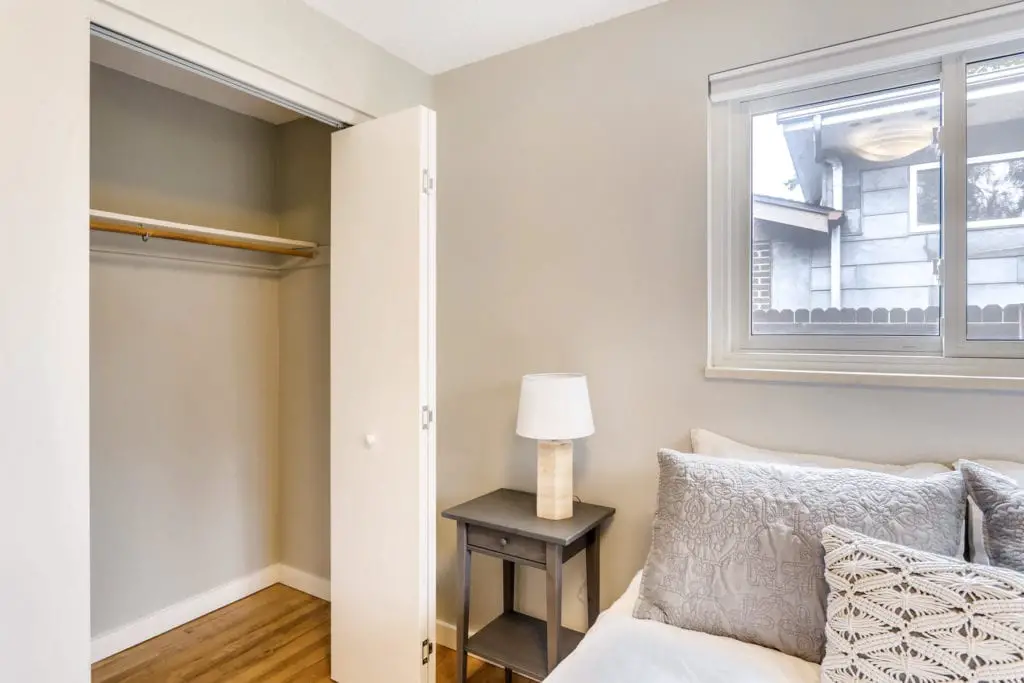
5. Hide any bath/bedroom personal care items in drawers (soap, razors, toothbrushes, lotions…)
6. Remove cleaning supplies like sponges, scrubbers, or dish drying racks from the kitchen counters.
7. Pack up small appliances living on kitchen countertops. Unless you have a cute Smeg toaster or something decorative, you should show a clean and uncluttered kitchen.
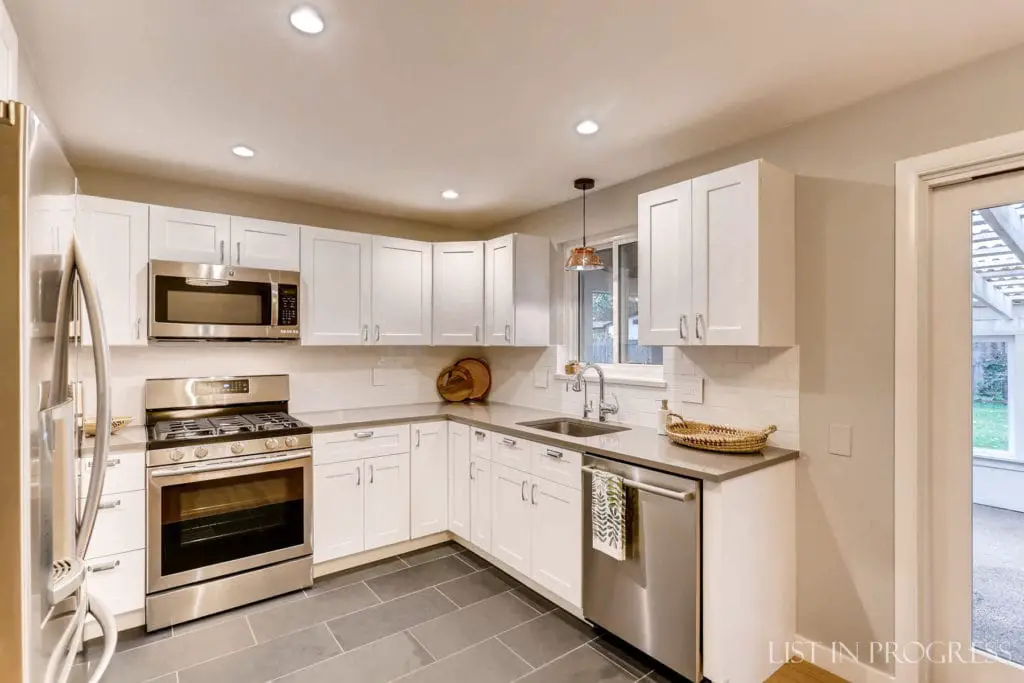
PUT on Display:
1. Decide on a whole-house color scheme and keep it neutral – with a potential pop of color. As you can see in my photos of staged homes, mustard or gold is popular with staging pros right now, but you can keep things simple, too.
2. Add a plant (real or faux) to every room. IKEA and Target are great sources for affordable faux plants. I just bought this faux potted thyme and it’s cute!
3. Corral all loose items in containers: baskets, trays, jars, canisters, bins. This makes your space (and you) appear organized.
4. If you love to decorate, create a few vignettes that tell a story. For example, place a tray with a candle and bath salts in the bathroom or an open cookbook and crock of wooden spoons in the kitchen. Like this:
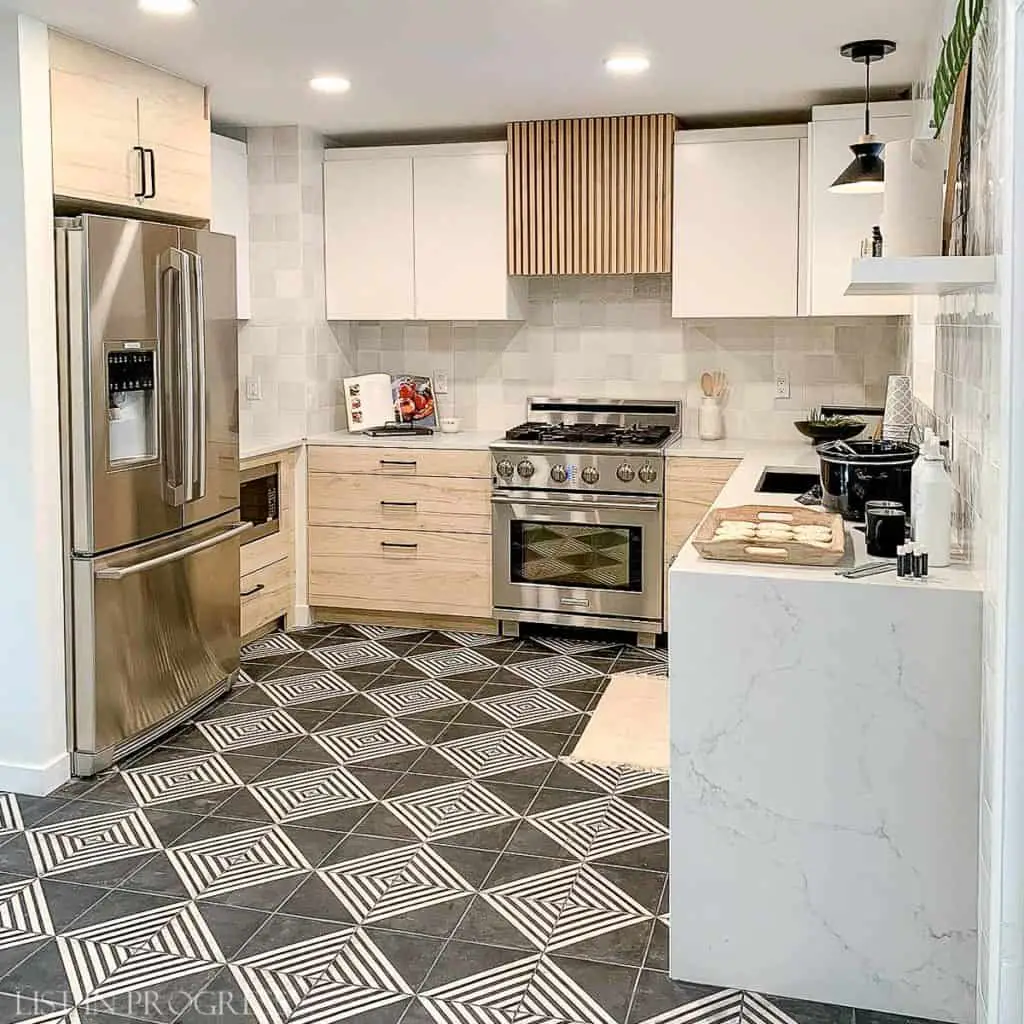
Read More About Our DIY House Updates
Favorite Behr White Paint Colors
Closet Door Ideas to Update Any Room
How to Apply Gold Leaf to Glass Decor
Trends in Cabinet Hardware
REPLACE:
1. Buy fresh hand towels to display in the kitchen and bathrooms. If you plan to display bath towels, buy new ones. (And tell your partner/kids not to use them!)
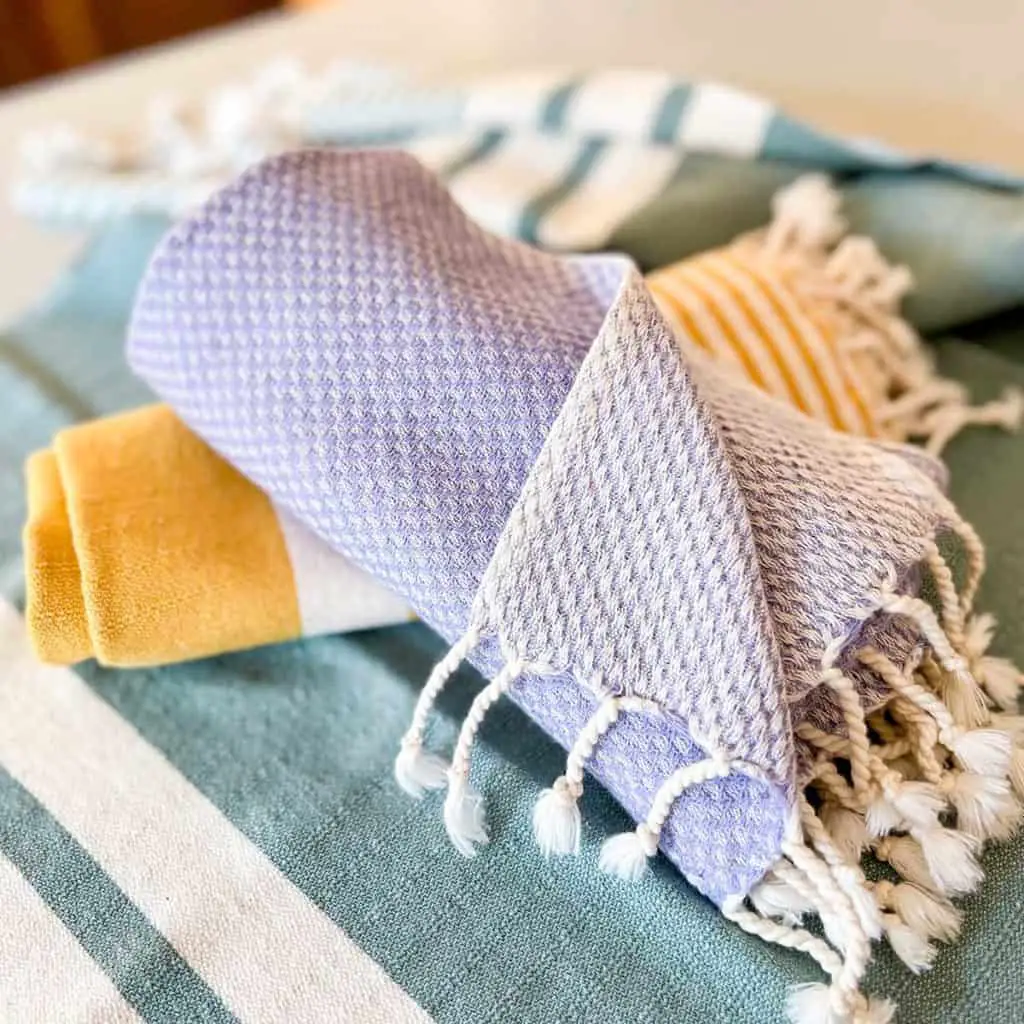
2. Invest in cute soap dispensers for the kitchen and bathroom. Honestly, you don’t even have to fill them.
3. Consider a few new throw pillows and blankets to freshen up your space.
4. Replace your doormats, inside and out. Buy a “welcome home” mat or add a little personality.
How to Stencil a Custom Doormat
5 Tricks to Stage an Empty Home on a Budget
To stage an empty home on a budget, you’ll need a big picture plan to stay organized. If you can, plan to purchase a few items that you’ll want to reuse in your next home. Also, remember to stick to your theme – pop of color, modern, boho, etc.
Start by deciding which rooms you plan to stage. Prioritize in this order: living room, master bedroom, kitchen, dining room, and bathroom. Bathrooms are lower priority, but it’s so easy to put out a new hand towel and soap dispenser – so why not? Here are results from NAR’s survey on staged room priorities, according to buyers’ agents:

Main Living Spaces
1. The living room is the biggest staging draw for buyers, so concentrate your furniture budget there. If you have decent furniture, use it. Or, could you borrow a nice couch or chairs from a friend or family member? Last resort, rent a few pieces for your listing photos and perhaps a week or two of showing the home. (I only suggest buying something if you actually want to replace your own furniture.)
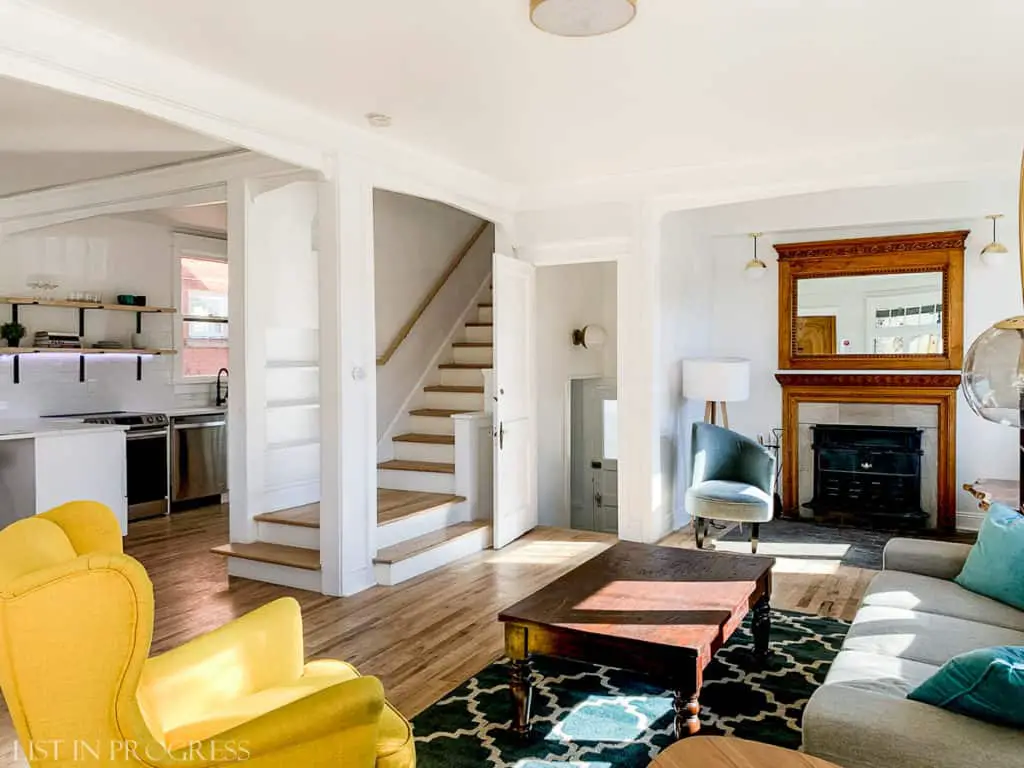
2. Stage the kitchen by showcasing its features, above all else. Display a cute hand towel, soap dispenser, and just a few other pieces, like stacking cutting boards against a wall or filling a few glass jars with different pasta shapes. Don’t leave open shelves empty – display a few items.
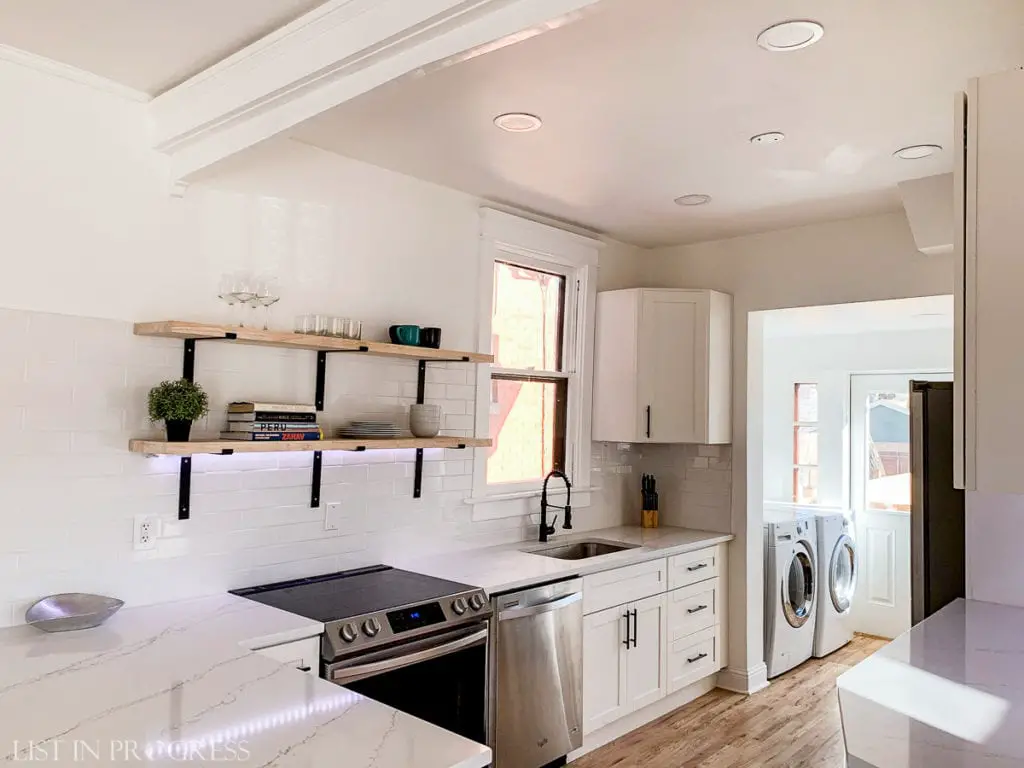
Bedrooms
1. Stage an easy bed using a couple of air mattresses. Use a bed skirt to hide the mattress on the bottom. I stacked one single queen mattress on top of one double-height queen air mattress when I staged this bedroom:
2. Make a stylish bed with a nice quilt or bedspread, four fat pillows, one extra long lumbar pillow, and a throw blanket. It’s nice to add some color, too. Here are two bedroom examples in the same staged house:
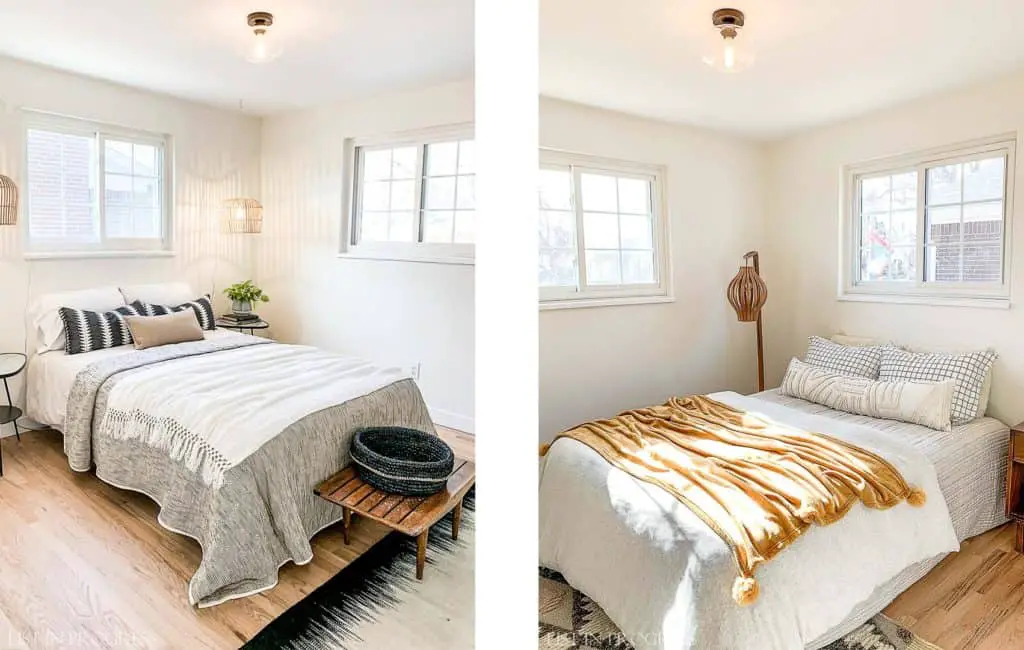
Bathrooms
If you choose to stage a bathroom, keep it simple. I mentioned new towels, and a small plant helps the space feel fresh.
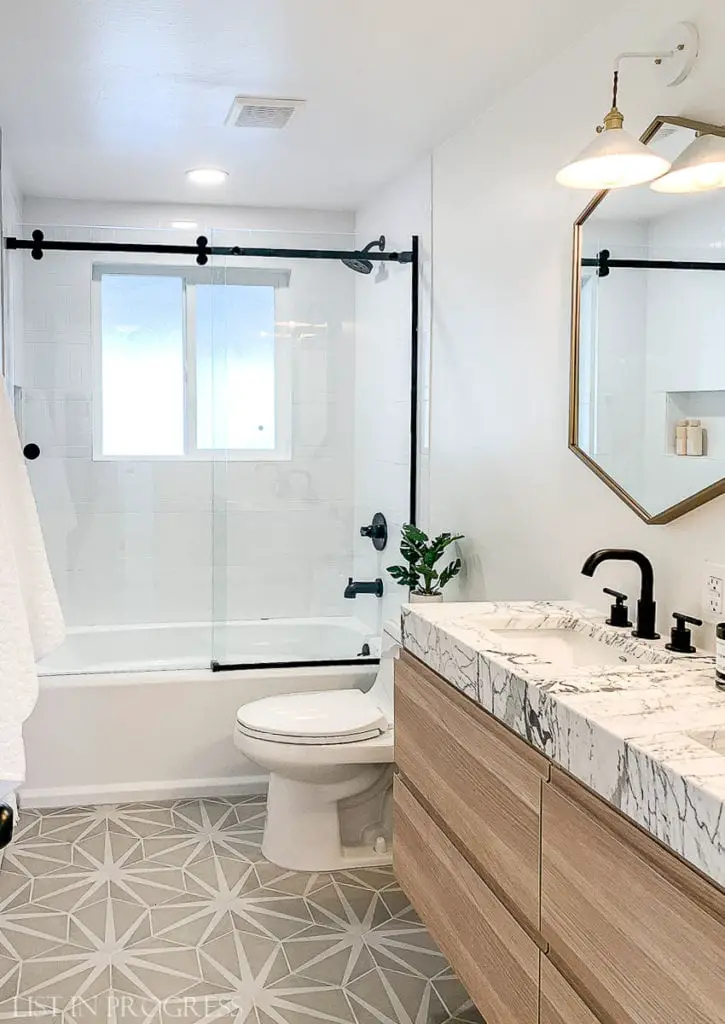
Read More About Our DIY House Updates
Favorite Behr White Paint Colors
Closet Door Ideas to Update Any Room
How to Apply Gold Leaf to Glass Decor
Trends in Cabinet Hardware
7 Extra Staging Tips for Any Home
1. Add texture and warmth to the space with simple touches like textiles, baskets, plants, lamps, and wooden accents.
2. If your space is light, use darker accessories for contrast. Or use light colors to brighten a dark room.
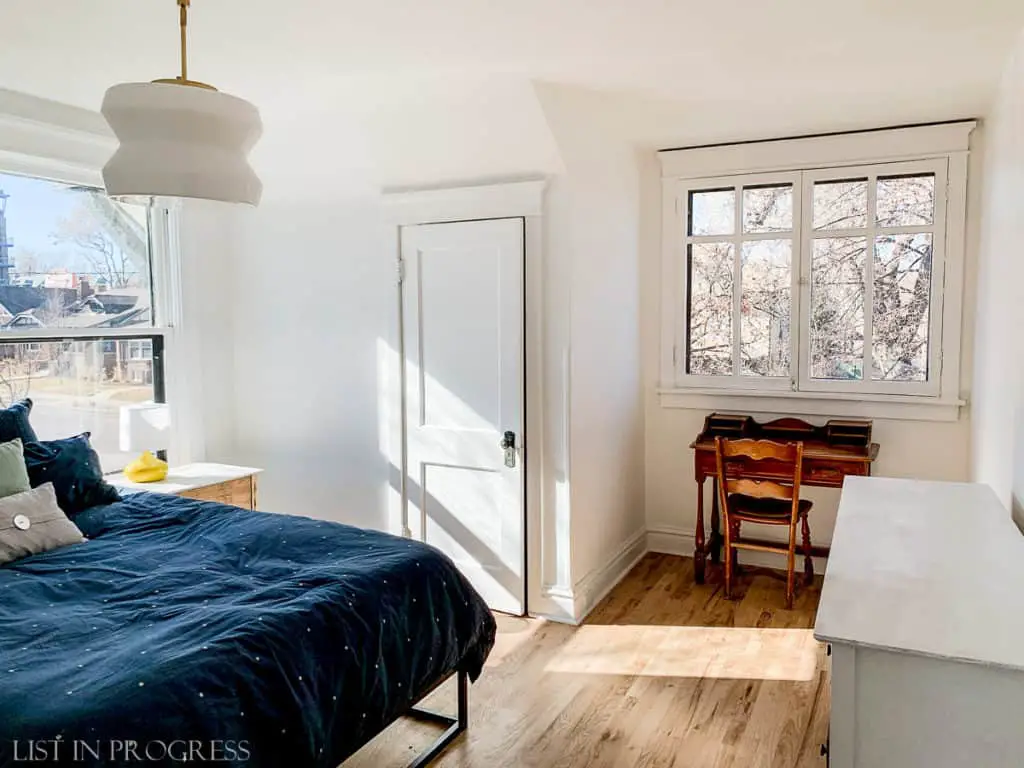
3. Group items in odd sets of 1 or 3, such as pillows, decor on bookshelves, or houseplants. Visually, this is more pleasing to the eye.
4. Add life to the kitchen or dining room with a bowl of uniform fruit (all lemons, all green apples, etc.) or freshly cut branches in a vase. Forsythia is a good pick in the spring. You could also place a vase of tall branches in the corner of a room. If you’ll reuse them in your future decor, faux and dried branches are lower maintenance than fresh. You can buy tall dried branches like these at IKEA or Target, like this option:
5. Snap a quick photo on your phone of each room to see how it will look in your listing photos. This always helps me step back and reconsider a design or layout.
6. In my opinion, add only natural scents (ex: simmer a pot of cinnamon sticks and orange peels), if you want to scent the house. Use caution though – some people are very sensitive to scents. A safer bet is just to clean the house.
7. When showing the house, fully open all the window coverings and turn on all lights. You could even go a step further and install brighter bulbs. The more light in your space, the better.

Professional Options to Stage a House
If you run out of time or energy for this project, call a pro! Here are some options.
Virtual Staging – Probably the least expensive choice for “staging” an empty home. Two popular companies, PadStyler and BoxBrownie, each charge around $30 per image. Essentially, after your home is professionally photographed, you’ll send the images over to be virtually staged. Graphics have come a long way! Here is an example from BoxBrownie of how it looks:
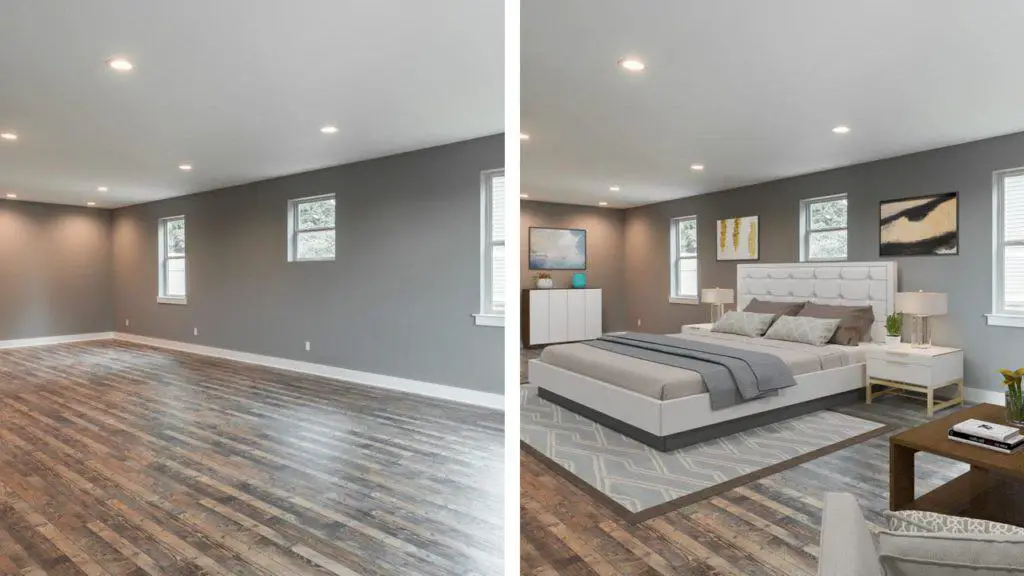
Pro Staging Companies – Local staging businesses may offer a variety of services. Most companies offer full staging for empty homes and consultations for occupied homes, which means, they’ll help you rearrange your decor for maximum appeal. Some companies will even rent furniture and decor, if you need a few pieces and don’t want to pay for the full staging service. There appear to be a range of staging options if you shop around.
There You Go! 30+ Budget Tips to Stage Your Home
Did anyone count them up? That’s a joke. I did count the tips for my post title, but I wanted to spare you a list numbered #1-30. I hope you found some useful ideas here and perhaps inspiration in these photos. Good luck staging and selling your house, or just fixing it up!
Other Posts in This Series:
4 Must-Do Projects Before You Sell Your House
8 Secrets to Getting the Best Home Inspection
More DIY Remodeling Tips from List in Progress

1 – How to Create Craftsman-Style Door Trim
2 – Best Exterior Behr White Paint Colors
3 – The Best Flooring for Every Room in Your House
4 – 2021 Cabinet Hardware Trends


